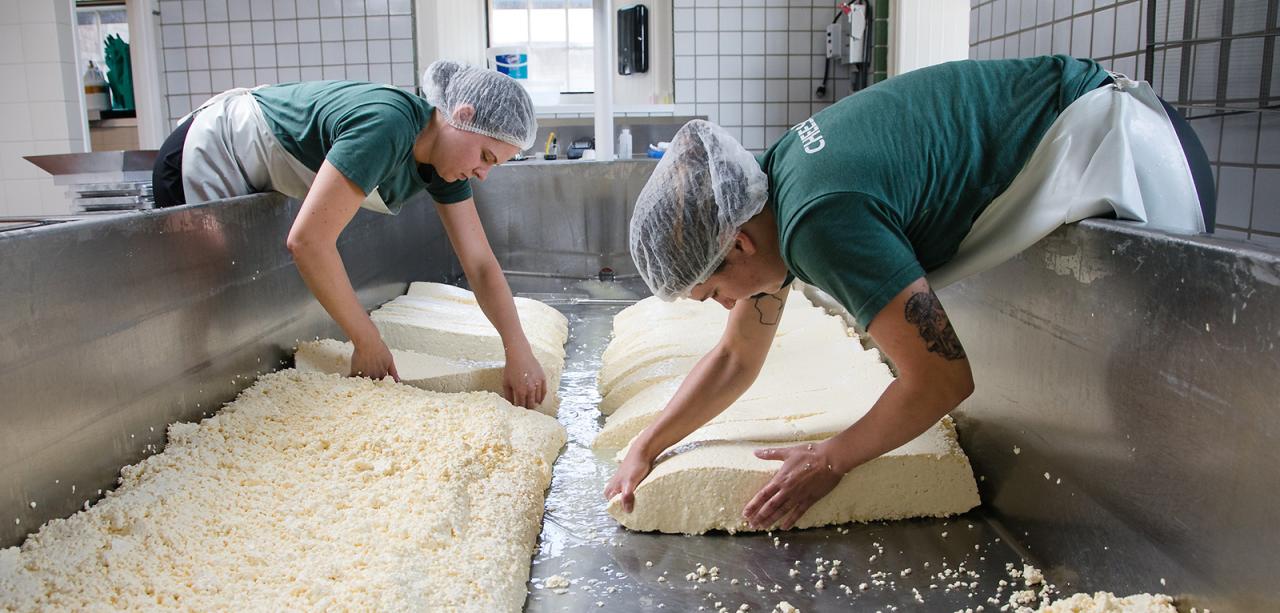Why Floridia Cheese Thomastown Is a Gem in Melbourne Made Cheese
Why Floridia Cheese Thomastown Is a Gem in Melbourne Made Cheese
Blog Article
Opening the Tricks of Artisanal Cheese Making: A Step-by-Step Do It Yourself Guide
In the realm of cooking workmanship, artisanal cheese making stands as a testimony to the fragile equilibrium in between practice and technology. Each step in the process, from selecting the right milk to refining aging techniques, holds within it a riches of expertise gave via generations. As we start this trip to debunk the art of creating beautiful cheeses, we are confronted with a tapestry of skills and tricks waiting to be unraveled. Join us as we check out the complexities of this ancient craft, where perseverance, art, and scientific research assemble to generate flavors that tantalize the detects.
Choosing the Right Milk
When getting started on the journey of artisanal cheese making, the choice of milk plays an essential role in determining the high quality and characteristics of the final item. The kind of milk picked affects the taste, structure, and in general account of the cheese.
When choosing milk for cheese production, it is necessary to consider the fat content. Higher fat content in milk can cause a creamier and richer cheese, while reduced fat material may bring about a drier and stronger appearance. Additionally, the source of the milk, whether from cows, goats, sheep, or buffalo, adds unique tastes and features to celebrity (Floridia Cheese Thomastown). Each kind of milk brings its own subtleties, permitting a variety of cheese varieties to be crafted based upon the picked milk. Ultimately, the choice of milk is a fundamental choice that establishes the foundation for an effective artisanal cheese-making endeavor.
Culturing and Coagulating
To launch the cheese-making procedure, the essential actions of culturing and coagulating have to be thoroughly executed to change milk into curds and whey. Culturing involves introducing beneficial bacteria to the milk, which after that begins the fermentation process. These germs convert lactose (milk sugar) into lactic acid, developing the acidic environment essential for coagulation. The kind of society used can substantially impact the taste, structure, and ripening of the last cheese item.

The timing and temperature control during culturing and coagulation are critical factors that affect the last end result of celebrity. Proper implementation of these actions is important to make sure the desired structure, taste, and consistency of check out here the artisanal cheese being produced.
Draining and Pushing Curds
After the milk proteins have actually coagulated and the curds have actually been reduced to launch whey, the next essential action in artisanal cheese making entails draining pipes and pressing the curds to accomplish the wanted texture and consistency of the final cheese item. The time for draining can vary depending on the kind of cheese being made and the wanted wetness web content.
Pushing assists get rid useful content of any type of remaining whey and compacts the curds to develop a solid cheese wheel. Correct draining pipes and pressing are important actions that dramatically impact the top quality and features of the artisanal cheese being generated.
Aging and Flavor Strategies
Applying precise aging and flavoring techniques is essential in boosting the depth and intricacy of artisanal cheeses, boosting their preference accounts to charming levels of refinement and class. Aging plays a crucial function in establishing the distinct flavors and appearances that differentiate artisanal cheeses.
Seasoning methods additionally contribute significantly to the last taste of artisanal cheeses. Cheesemakers may choose to introduce added tastes by integrating components such as natural herbs, seasonings, and even fruits right into the cheese during the production procedure. In addition, some cheeses are cleaned or rubbed with numerous liquids, such as salt water or alcohol, to enhance their flavors and appearances.
Wrapping and Storing Cheeses

Verdict
In conclusion, understanding the art of artisanal cheese making entails very carefully choosing the ideal milk, adhering to accurate culturing and coagulating procedures, draining pipes and pressing curds successfully, and using various aging and flavoring strategies. Keep in mind to wrap and save your cheeses properly to make certain ideal flavor and structure growth.
Each type of milk brings its very own subtleties, enabling for a broad array of cheese varieties to be crafted based on the picked milk.After the milk healthy proteins have coagulated and the curds have been cut to launch whey, the following crucial step in artisanal cheese making involves draining and pushing the curds to achieve the desired structure and uniformity of the final cheese product. Many cheeses should be covered in wax paper or cheese paper to enable them to breathe while protecting them from drying out. For cheeses that need to proceed aging, such as bloomy rinds or cleaned peels, guarantee they are kept in an amazing setting like a cheese cave or a refrigerator established to the proper temperature. By paying interest to the wrapping and storage of artisanal cheeses, cheese makers and lovers can preserve the honesty of these specials and completely appreciate their complicated tastes.
Report this page